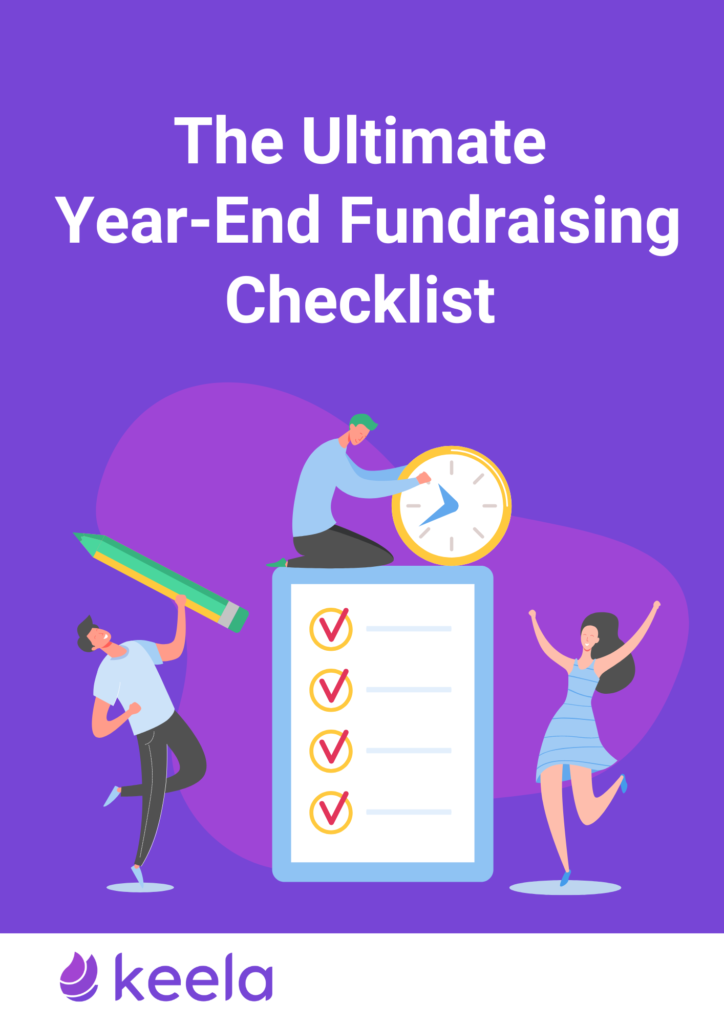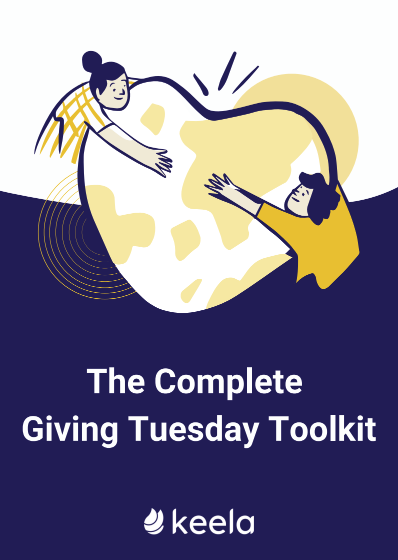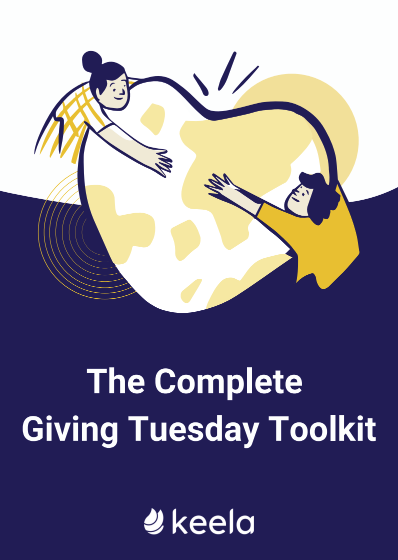7 Annual Charitable Giving Statistics & How They Affect Your Strategy


Your annual giving or year-end fundraising strategy is likely your nonprofit’s most important fundraising campaign each year. At the end of the year, donors are motivated to submit last-minute donations to receive tax write-offs and calculate their adjusted gross income.
Your nonprofit requires a clear strategy to make the most of this giving opportunity. But how can you ensure that your year-end giving plan is up to the task?
In this guide, we’ll highlight seven illuminating charitable giving statistics that reveal noteworthy year-end giving trends. We’ll also explore how you can put these insights into action to create a data-driven annual giving approach that boosts revenue and charitable donations for your mission.
1. 37% of total funding is received in the last three months of the year.
Source: Blackbaud Institute’s 2021 Charitable Giving Report
When it comes to annual charitable giving, three months stand out above the rest as the most crucial for your campaign: October, November, and December. Over a third of annual gifts were submitted during these months in 2021, a trend that holds steady year after year.
How does this statistic impact your annual giving strategy?
Your year-end marketing campaign should kick off in October and ramp up in intensity throughout November and December. Promote your online donation page across your website, email, and social media pages to direct donors to convenient giving opportunities. Be sure to also advertise your year-end giving opportunities at events, such as volunteer opportunities or fundraising events.


Want to take your Year-End Campaign to the Next Level?
Download our Ultimate Year-End Fundraising Checklist to make sure you have everything you need to surpass your revenue goals!
2. 25% of all online fundraising revenue in 2021 was received in December.
Source: M+R Benchmarks 2022
Within the last three months of the year, December is far and away the most productive giving month for most nonprofits, especially in terms of online revenue.
If you start approaching the end of the year and haven’t met your annual giving goals yet, don’t worry. Expect your donors to procrastinate. According to research, December 31 tends to be the single largest giving day of the year.
Online Fundraising Statistics
Online giving and digital fundraising have become essential tactics for nonprofits looking to stay competitive in a rapidly evolving landscape. According to a recent study, online giving revenues experienced a growth rate of 23% in 2019, a significant increase from the previous year’s 15%. This upward trend is expected to continue, as traditional methods of communication, such as phone calls, mail, and in-person outreach, become less effective.
If your organization has yet to fully embrace online giving as a key element of its strategy, now is the time to adapt to the changing marketplace and make it a primary source of revenue.
Online Giving Trends
Online donations have increased by 42% since 2019, and are expected to increase with the use of online platforms and fundraising software, like Keela.
3. Giving Tuesday 2022 saw a total of $3.1 billion in charitable donations in the U.S. alone.
Source: Giving Tuesday
Giving Tuesday is an annual charitable giving movement that takes place on the Tuesday after Thanksgiving in the U.S. Any nonprofit can launch a Giving Tuesday campaign to tap into the charitable spirit that surrounds this annual event.
Make your next Giving Tuesday campaign a success by following these steps:
- Start promoting your campaign well in advance: Let supporters know when Giving Tuesday is and how they can show their support (whether through monetary donations, in-kind gifts, volunteering, or advocacy).
- Tell a story: Put a face to your Giving Tuesday campaign by including interviews with beneficiaries or volunteers who have been positively impacted by your cause.
- Provide an easy-to-use and share online donation form: Make sure your donation page only asks for essential information, such as donors’ names, contact information, and payment details. Also, verify that the form is mobile-friendly so donors can give from anywhere at any time.
These Giving Tuesday statistics and tips will help you optimize your campaign and enter the final stretch of the year-end fundraising season strong.


Ensure Your Giving Tuesday Campaign is a Success with This Toolkit
Download Keela’s Giving Tuesday Toolkit to better understand how to set up donation pages, create events, and run successful email and social media campaigns!
4. 81% of millennials and Gen Z donated to charitable organizations in 2020.
Source: Bank of America Private Bank’s Philanthropic Solutions Group
Traditionally, the majority of nonprofit donors for any organization are over the age of 50. But as this statistic reveals, Millennials and Gen Z are highly motivated to support their favorite charities and nonprofits.
Consider building relationships with these demographics now to help your organization secure loyal support and earn more donations down the line when these supporters gain greater charitable giving potential.
Appeal to younger generations throughout your annual charitable giving campaign by:
- Maintaining an active social media presence: Especially on popular platforms like Instagram or TikTok. Research shows that Millennials spend an average of 2.5 hours per day on social media while Gen Z spends an average of 3 hours per day.
- Offering multiple giving methods: Including credit and debit cards, Venmo, PayPal, and Apple Pay. You can also launch a text-to-give campaign to reach younger donors on their mobile devices.
- Explaining the impact of your campaign on your mission: Younger donors want to give to charities and nonprofit organizations that align with their personal values. Within your marketing materials, clearly explain how your organization will use donations to further your cause. For example, let donors know that their contributions will help fund your community garden construction project or your volunteer program expansion plan.
Ultimately, Millennial and Gen Z donors want to feel like a part of your charity or nonprofit’s community. Engage with them on multiple platforms by appealing to their interests to develop genuine relationships. You can even send surveys to these donors to ask for their feedback and insight.
5. The average donor retention rate for the nonprofit sector is 45%.
Source: The Fundraising Effectiveness Project
Engaging with new donors year-round is critical to boosting your recurring donations and retention rate, and accessing greater support during the year-end giving season.
Your charity or organization’s donor retention rate might be different than the average. Understanding where you stand can help you revamp your donor stewardship strategies ahead of your annual donations or giving campaign.
As you strategize ways to improve your donor retention rate, ask yourself these questions:
- Do we send donor thank-you messages promptly after a donor gives?
- Do we provide multiple ways for donors to stay in touch after giving, such as introducing them to volunteer opportunities or inviting them to sign up for our email newsletter?
- Do we go above and beyond to make new donors feel welcome at our organization, such as by sending out feedback surveys or inviting them to appreciation events?
Refer to these questions as a starting point to note where your donor retention strategy is succeeding and where it could use improvement.
Learn how to raise more for your annual charitable giving campaign with Keela.
See how Keela helps nonprofits to boost revenue and charitable donations through its all-in-one donor management system and fundraising software.
6. An estimated $4-7 billion in matching gifts goes unclaimed each year.
Source: Double the Donation
In corporate matching gift programs, businesses match donations that their employees make to eligible nonprofits. However, potential match-eligible donors often aren’t familiar with these programs.
To boost matching gift revenue during your year-end giving campaign, search for a matching gift platform that offers auto-submission. With auto-submission functionality, donors can request matching gifts directly from your donation submission page rather than submitting them to their employer or a third-party portal.
This makes the matching gift process much faster and more convenient for donors, driving greater revenue for your annual fundraising campaign.
Corporate Giving Statistics
Corporate giving programs can offer a substantial boost to the funds raised by non-profit organizations. However, Double the Donation’s research on matching gifts shows that a staggering 26 million people are qualified for corporate matching through their employers, and yet 78% of this population remains unaware of the available programs.
This lack of knowledge is a significant barrier to participation in corporate matching giving programs. To address this challenge, we recommend implementing a corporate giving program awareness campaign that will bridge the knowledge gap and educate more eligible donors about the available opportunities.
7. Adding a person’s full name to direct mail messages can increase responses by 135%.
Source: Nonprofits Source
Personalization is key to any successful marketing campaign, and the statistics reflect that. Just adding the recipients’ full names to a letter or postcard can increase response rates significantly and show each supporter that you see them as a unique individual.
The same principle applies to your digital fundraising sources like your email and social media communication platforms. Use your donor management software to store donor information such as donors’ full names and giving histories. Then, you can personalize your marketing outreach on any platform by incorporating this information.
BWF’s digital fundraising guide recommends taking this a step further by segmenting donors based on shared characteristics. For example, you might group donors based on donation amount or frequency. This allows you to create more personalized messages for each group while saving your marketing team time.
Staying in the know about general fundraising trends and charitable giving statistics specific to year-end fundraising can help you plan an effective annual charitable giving strategy and donor retention plan.
Keep track of key metrics throughout your fundraising campaigns to gather a variety of internal charitable giving statistics that will help guide your strategy. You can combine internal and external information to build a plan that works for your nonprofit’s unique needs while still acknowledging sector-wide trends.


Want to Keep Tabs on Current Fundraising Trends?
Use this guide to learn how the nonprofit sector is adapting to the increasingly digital landscape and get tips on how your organization can take advantage of current opportunities.


About the author:
James Barnard
Associate Managing Vice President of Annual Giving and Digital Marketing, BFW
James an integral part of the team at the global fundraising consultancy BWF. He helps nonprofit clients develop digital strategies for fundraising and marketing. James has been active in CASE for a number of years, participating as a conference speaker and CASE District II board member.





